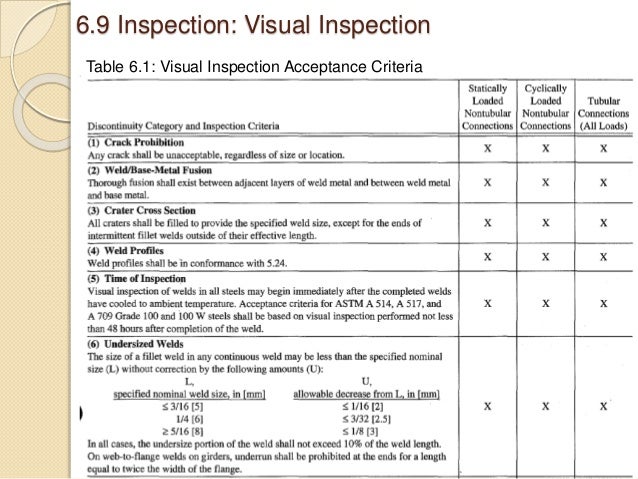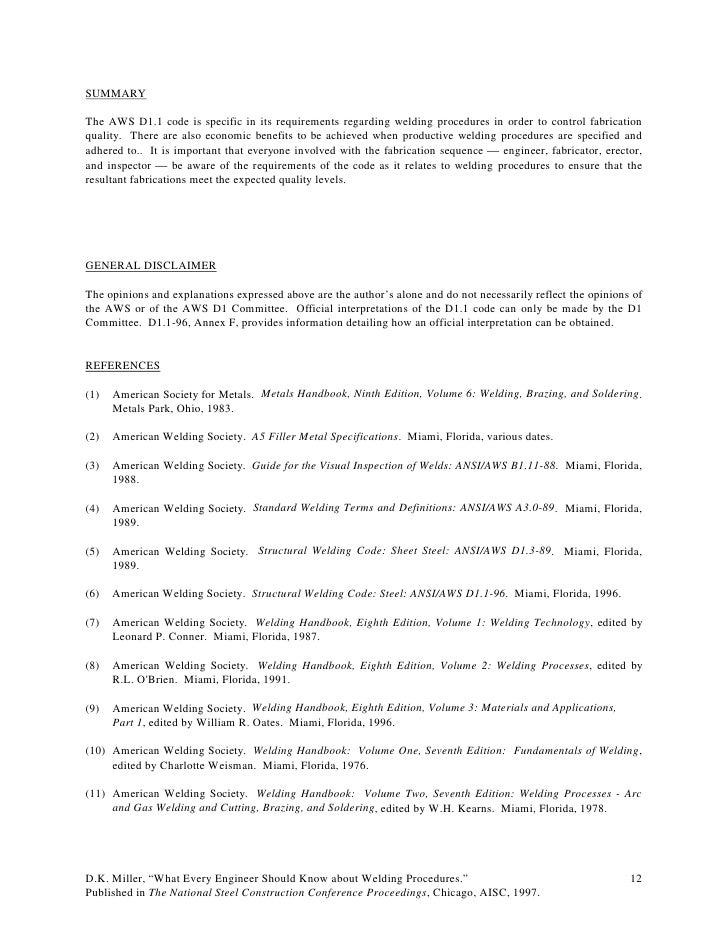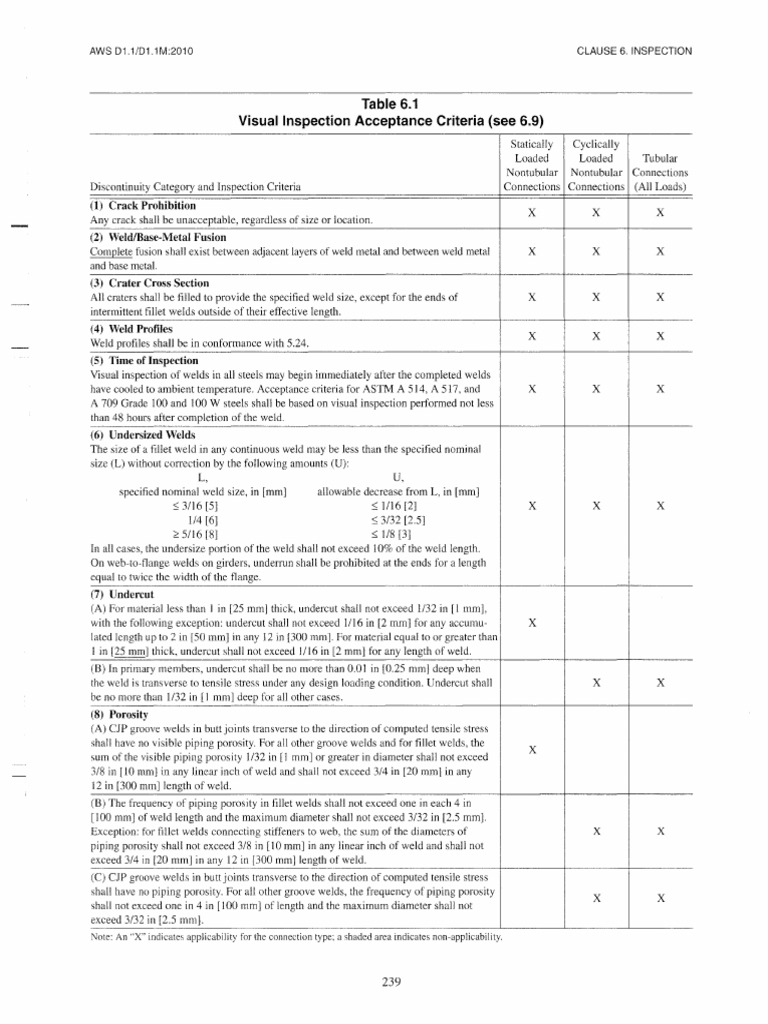The acceptance criteria of ASME is not as stringent as AWS D1.1. ASME Section IX has no visual criteria for attributes such as undercut, overlap, face or root reinforcement, porosity etc. As such, the inspector has no basis of evaluating (accepting or rejecting) those types of discontinuities. The following was taken from one AWS codebook (Structural Steel D1.1: 2010) that identifies the visual welding requirements and qualifications. With that in mind, information has to be taken from several different areas, which include; Section #6 Inspection, Section #5 Fabrication (5.26 repairs), Section #1, etc.
- Aws D1 1 Visual Inspection Acceptance Criteria
- Aws D1.1 Section 6 Inspection
- Aws D1.2 Visual Acceptance Criteria

AWSD1.1 Visual Inspection Acceptance Criteria
All welds shall be visually inspected and shall be acceptable if the criteria of Table 6.1 AWS D1.1 are satisfied.

To more explanation about Visual Inspection Acceptance Criteria you can open AWS D1.1 section 6 (inspection) part C.
Before you inspect and make decision about weld as per AWS D1.1, you must know definitions of:
1. Statically Loaded Nontubular Connections (more detail see Section 2 part B AWS D1.1)

2. Cyclically Loaded Nontubular Connections (more detail see Section 2 part B,C AWS D1.1)
3. Tubular Connection (all Load) (more detail see Section 2 part D AWS D1.1)
Below Summary Visual Inspection Acceptance Criteria As per AWSD1.1 Table 6.1 :
- Any Crack shall be unacceptable, regardless of size or location
- All craters crack (start/end) shall be filled, except for the end of intermittent fillet weld outside of their effective length
- All weld profiles shall be free from cracks, overlaps, and the unacceptable profile discontinuities exhibited in Figure 5.4.

- Visual inspection of welds in all steels may begin immediately after the completed welds have cooled to ambient temperature. Acceptance criteria for ASTM A 514, A 517, and A 709 Grade 100 and 100 W steels shall be based on visual inspection performed not less than 48 hours after completion of the weld.
- The size of a fillet weld in any continuous weld may be less than the specified nominalsize (L) without correction by the following amounts (U) on Table 6.1
- Undercut and porosity see more detail on Table 6.1
Methods of Testing and Acceptance Criteria for WPS Qualification (Section 4) Visual Inspection.
For acceptable qualification, welds shall meet the following requirements:

(2) All craters shall be filled to the full cross section of the weld.
(3) The face of the weld shall be flush with the surface of the base metal, and the weld shall merge smoothly with the base metal. Undercut shall not exceed 1/32 in. [1 mm]. Weld reinforcement shall not exceed 1/8 in. [3 mm].
Aws D1 1 Visual Inspection Acceptance Criteria
(4) The root of the weld shall be inspected, and there shall be no evidence of cracks, incomplete fusion, or inadequate joint penetration. A concave root surface is allowed within the limits shown below, provided the total weld thickness is equal to or greater than that of the base metal.
(a) The maximum root surface concavity shall be 1/16 in. [2 mm] and the maximum melt-through shall be 1/8 in. [3 mm].
Aws D1.1 Section 6 Inspection
(b) For tubular T-, Y-, and K-connections, melt-through at the root is considered desirable and shall not be cause for rejection.
Aws D1.2 Visual Acceptance Criteria
(CMIIW)
by online welding courses – non destructive testing
by online welding courses – non destructive testing
